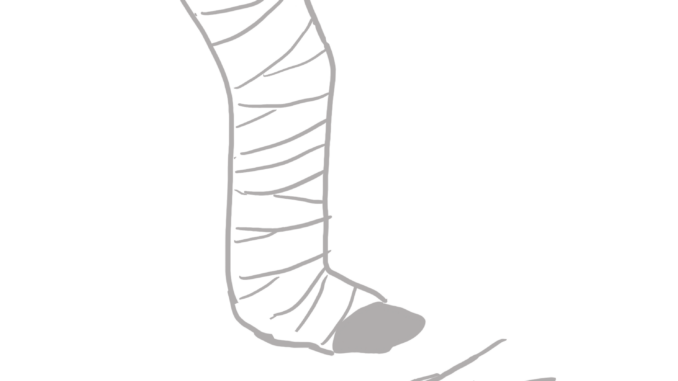
When attending any sporting event, the attention of the spectators tends to be focused on the players. But what about the people on the sidelines? More specifically, what about the people who make sure the athletes stay healthy? Sports medicine specialists help athletes both directly after an injury, knowing proper transportation procedures of an injured person, as well as during the (often) many months after an injury during rehabilitation. They work to help athletes get back on their feet and ready to play again, and avoid future injuries.
Jeremy Loew ’95, Lewis & Clark’s head athletic trainer, works primarily administrating the sports medicine department. He got his undergraduate degree in Communications – now known as Rhetoric and Media Studies – here at LC, and was himself a student athlete, playing baseball during his time here.
“It took me a couple years to figure out that this was what I wanted to get into. I worked a lot of hours in the training room. There were classes I had to take to sit for the athletic training boards, so I took those on the side — through summer school and cross-registration,” Loew said. “I worked for about five years in professional baseball before going back to grad school. After I had been out of school for a year, a position opened up here. As fun as it was to be in pro athletics, I enjoy working with different sports here.”
Loew went on to detail a day in his life working with athletes and other sports medicine workers.
“Yesterday I got here at 5:30 in the morning for football practice. We spend an hour leading into practice getting our supplies ready and taking care of whatever athletes’ needs are to get them ready. For football, specifically, we sit out there at practice, keeping an eye on things, prepared in case something goes wrong. The time after practice is usually spent on injury treatment or care, and sometimes just routine rehabilitation with specific athletes.” said Loew.
After that initial morning rush, the sports medicine workers are generally in their office throughout the day for support and safety, until all team practices end. Student athletes receive free access to the sports medicine program.
“For the most part, teams don’t practice unless someone from my staff is physically in the building and available. For off-site sports, we try to make sure we are available by phone,” said Loew.
The staff of certified professionals consists of four people — and there are a tremendous amount of teams on campus. The department also employs student workers, most of whom have an academic interest in medicine and physical therapy and are looking to gain clinical experience. Having extra hands helps so that the staff of trainers do not spread themselves too thin. They also host interns from Pacific University’s Athletic Training Master’s Program.
“(The student workers) are kind of just extensions of our hands. We teach them to tape ankles and wrists, and how to run the equipment to help with running treatments at our instruction,” said Loew. “They fill water bottles, wipe tables, and fill tubs — but those are all things that we do ourselves as well. It’s an opportunity for them to be inside the ropes with us but without the pressure of a decision-making position. There’s no question that we could not reach as many athletes as we do without our student workers. They are a big part of what we do and a huge support to student athletes.”
Loew and the sports medicine staff play a huge part in keeping our athletes healthy and our teams successful — keep a look out for them on the sidelines at games!
Subscribe to the Mossy Log Newsletter
Stay up to date with the goings-on at Lewis & Clark! Get the top stories or your favorite section delivered to your inbox whenever we release a new issue.

Leave a Reply